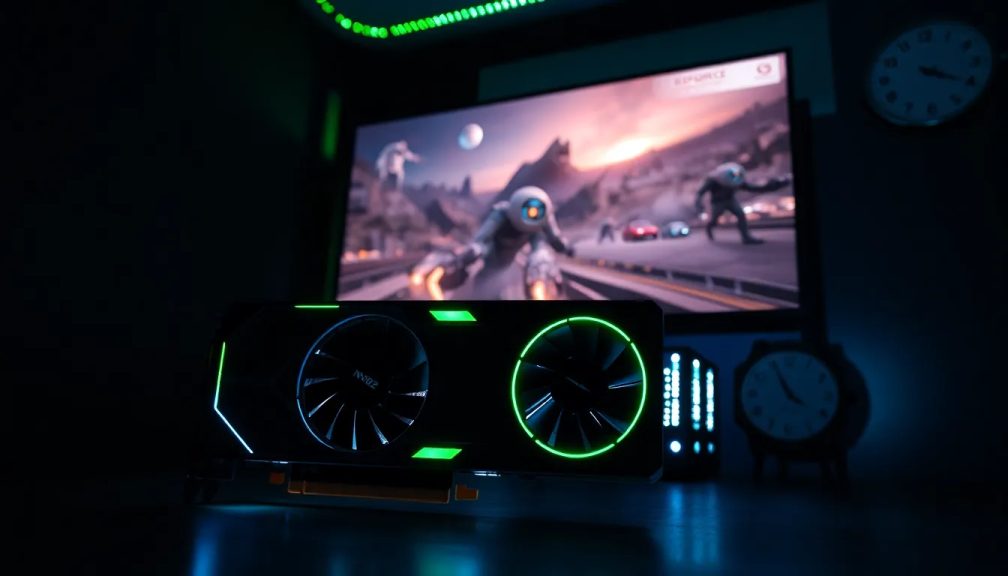Nvidia GeForce RTX 2060 Performance After Seven Years

Seven years have passed since Nvidia launched the GeForce RTX 20 Series, marking a pivotal moment in the evolution of gaming graphics. This series introduced ray tracing technology and advanced upscaling methods that have since reshaped the gaming landscape. Recently, I acquired an RTX 2060 Founders Edition just in time for this anniversary, and I’m eager to evaluate how this entry-level Turing graphics card performs in 2025.
Despite being several years old, the RTX 2060 continues to boast a dedicated user base. According to the Steam Hardware & Software Survey, 2.22% of gamers are still utilizing this card, making it the most popular GPU in the GeForce RTX 20 Series and the eighth most common GPU on the platform, excluding mobile variants. With so many users still relying on the RTX 2060, it’s essential to assess its capabilities against modern gaming demands and applications.
Understanding the specifications of the RTX 2060
Before diving into performance analysis, let’s revisit the technical specifications of the RTX 2060. This card, based on the TU106 architecture, has seen significant advancements since its launch, especially as manufacturing processes have evolved.
The RTX 2060 features a die size of 445mm², which is larger than the 378mm² die of the upcoming RTX 5080. This is noteworthy considering the ongoing trend of reducing chip sizes in newer generations.
In terms of transistor density, the RTX 2060 utilizes TSMC's 12nm process, allowing it to pack 24.3 million transistors per square millimeter. In contrast, modern GPUs, like Nvidia's GB207 die, are achieving densities nearly five times that, with 113.4 million transistors per mm² thanks to the latest TSMC 4N process.
Equipped with 1,920 CUDA cores and a boost clock of 1.7GHz, the RTX 2060 was designed to rival the GTX 1070, and it performs comparably in rasterized rendering. It can even match the GTX 1070 Ti and GTX 1080 in select scenarios, showcasing its capability for both gaming and productivity tasks.
One of the standout features of the RTX 2060 is its use of GDDR6 VRAM, offering a significant upgrade over the previous generation. The memory bandwidth has increased from 192GB/s in the GTX 1060 to 336GB/s in the RTX 2060, thanks to the faster 14Gb/s memory modules. This enhanced bandwidth allows for better performance in memory-intensive tasks.
While the RTX 2060 has only 6GB of VRAM, it still outperforms the RTX 4060 (272GB/s) and RTX 5050 (320GB/s) in terms of bandwidth due to its superior memory speed. However, both of those newer cards feature greater VRAM, totaling 8GB, which can impact performance in more demanding applications.
Additionally, the RTX 2060 includes second-generation RT cores and 240 Tensor cores, which enhance its capabilities in ray tracing and AI tasks. However, the controversy surrounding its launch price of $349 (equivalent to approximately $449 today) raised eyebrows, as it marked a notable increase from the GTX 1060's price point.
Performance analysis: how does the RTX 2060 stand up today?
Testing the RTX 2060 on the Club386 7950X3D test bench emphasizes its performance without bottlenecks, allowing for fair comparisons with other graphics cards. While I initially considered testing at higher resolutions, I focused on 1080p to gain insight into the card's capabilities.
In synthetic benchmarks like 3DMark, the RTX 2060 typically ranks lower, but the real question lies in how it compares with newer models. For instance, a comparison of rasterization performance shows a significant 94% improvement when placed against the RTX 5060 in Steel Nomad, with ray tracing performance showing an impressive 172% uplift.
Performance in applications and AI
When it comes to applications, the RTX 2060's performance is still respectable, although it falls short compared to newer offerings. In Blender, for example, the RTX 2060 performs well, but newer cards like the RX 9060 XT 16GB outperform it, showcasing how software optimization favors Nvidia cards. The Arc B580 also puts up a good fight but only leads by 30% over the RTX 2060.
AI capabilities are becoming increasingly vital in consumer graphics cards. The RTX 2060 was an early adopter of AI features, but its aging architecture shows limitations in handling contemporary AI workloads. Its score of 21,430 is dwarfed by newer models, which can achieve 41-97% higher scores.
Furthermore, the 6GB of VRAM is a significant limitation for large language models, making the RTX 2060 less suitable for demanding AI applications such as Llama 3.1 in 2025.
Gaming performance: is it still viable?
In terms of gaming, the RTX 2060 achieves an average frame rate of 65fps in our gaming suite, which is commendable for a card from 2019. However, the performance dips with demanding titles. Enabling DLSS Super Resolution can enhance performance without sacrificing too much image quality, yet it highlights the need for further improvements.
In comparison to newer competitors, the Arc B580 offers a 43% performance boost over the RTX 2060, while the RTX 5060 and RX 9060 XT 16GB see more substantial gains of 83% and 105%, respectively.
Taking a closer look at specific titles, the RTX 2060 performs decently in Final Fantasy XIV: Dawntrail, averaging 89fps. However, it struggles to maintain a clean 60+fps run, particularly during intense action sequences.
In contrast, Forza Motorsport proves to be a challenge, with the RTX 2060 averaging only 18fps. Its older RT cores, combined with limited VRAM, hinder its ability to manage ray tracing effectively in demanding scenarios.
In less demanding games, the RTX 2060 still shines, achieving triple-digit frame rates in Mount & Blade II. Compared to newer models, the RTX 5050 and RTX 4060 show improvements of 45-46%, while the Arc B580 surpasses it with a 50% increase.
For esports titles, the RTX 2060 remains a viable option, achieving an average of 120fps. While it doesn’t provide much headroom above the target frame rate, it performs adequately for competitive gaming. However, newer options like the Arc B580, RTX 5060, and RX 9060 XT 16GB maintain minimums above 120fps, making them better suited for high-refresh-rate monitors.
Future considerations: is it worth keeping or upgrading?
After evaluating the RTX 2060's performance in 2025, it’s evident that while it has its strengths, it also shows limitations, particularly in AI and ray tracing capabilities. For casual gamers and those who play less demanding titles, the RTX 2060 is still a capable card. However, its 6GB VRAM and older architecture struggle with modern gaming workloads.
Considering the options available today, such as the RX 9060 XT 16GB, RTX 5060 8GB, and Intel's Arc B580 12GB, there's substantial room for improvement. These alternatives promise not only better performance but also longevity in the face of rapidly evolving gaming demands.
In conclusion, if you're contemplating an upgrade from the RTX 2060, now is the ideal time to explore newer graphics cards that will provide a more transformative gaming experience. The advancements in technology and performance in models priced between $250 and $350 are compelling reasons to make the switch.




Leave a Reply